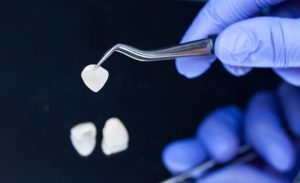FULL-SPEED FORWARD
March 4, 2024
 I’m sure we all agree that keeping up with technology is not easy. From computers to cell phones to cars, and everything in between, changes take place at lightning speed. No matter what we buy, there is always something right around the corner, or already there, that is better.
I’m sure we all agree that keeping up with technology is not easy. From computers to cell phones to cars, and everything in between, changes take place at lightning speed. No matter what we buy, there is always something right around the corner, or already there, that is better.
I purchased a digital x-ray system back in January of 2008 to replace film and chemicals to develop. By June of the same year, the same company came out with a smaller, thinner sensor. This didn’t make mine obsolete, but my $10,000 investment made six months before could now be purchased for half the price. I thought I was “jumping in” at the right time.
As with most, if not all industries, technology is sweeping the dental field. We are digitizing everything. Offices that are not already “paperless” are moving in that direction. Automated systems for appointment confirmation via text or email, scheduling appointments, paying bills online, filling out online forms, and digital patient charts have been commonplace in dental offices for a while.
Digital radiology is transforming the way we treatment plan and deliver services such as dental implants. This 3-Dimensional technology allows accurate evaluation of biological structures to provide almost pinpoint placement of dental implants that may not have been able to be done using traditional methods. Notice I said “almost” pinpoint accuracy. It’s still not perfect, but it keeps getting better and better.
You may be aware that some dental offices can make crowns chairside without the use of gooey impression materials or the need of a dental laboratory. This technology has been around for over 25 years. The first generation of this technology was pretty cool back in the day, but delivered less than stellar results. Today, it is safe to say, this technology has greatly improved, continues to get better, and is not going away.
While the technology has gotten significantly better, there are still limitations. Currently, this technology uses a reduction method to fabricate restorations. This means that the restoration is milled from a solid block of material. The material choices are somewhat limited but getting better. What’s next? Maybe 3-D printing of whatever material you would like to use.
I read an article recently about 3-D printing technology where the CEO of this particular company working on dental applications said, “If 3D printing hopes to break out of the prototyping niche it has been trapped in for decades, we need to find a disruptive technology that attacks the problem from a fresh perspective.” I think this technology will be a game-changer.
I have always struggled with when to “jump-in” with certain technologies. It’s not an easy decision. The high cost, the learning curve, and knowing there is always something better right around the corner have been the barriers for me. The more I read about what is on the horizon, the more I want to wait for the “next best thing.”
Dentistry is moving fast forward in technological advances. However, two things come to mind about technology and dentistry. The first, is to keep in mind that sometimes the best option may be an older model. For example, gold is still used in dentistry, and definitely has a place in certain circumstances. The second thing, is that someone has to pay for all this advanced dentistry, and dental insurance companies haven’t changed their model since the 1970’s. Many insurance companies will pay for more of your filling if get a “silver” one than a tooth-colored one.
First, we need to find “disruptive technology” to help prevent dental disease and treat it earlier and better. Prevention should be the focus. We also need to have a disruptive revolution of dental insurance. The current model is a no-win situation, except for the insurance companies.
Dr. St. Clair maintains a private dental practice in Rowley dedicated to health-centered family dentistry. He has a special interest in treating snoring, sleep apnea and TMJ problems. If there are certain topics you would like to see written about or questions you have please email them to him at jpstclair@stclairdmd.com
No Comments
No comments yet.
RSS feed for comments on this post.
Sorry, the comment form is closed at this time.







